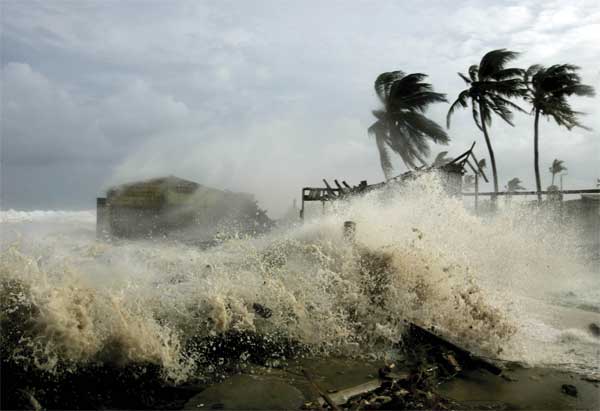/ Home / MIR3 advises checking Preparedness & DR Plans ahead of Hurricane Season
MIR3 advises checking Preparedness & DR Plans ahead of Hurricane Season
 With the 2011 hurricane season set to officially begin June 1, MIR3, the innovator of real-time Intelligent Notification™ and response technology, is urging employers to review their current business continuity and disaster recovery (BC/DR) plans to keep employees safe and operations running should a hurricane or tropical storm hit.
With the 2011 hurricane season set to officially begin June 1, MIR3, the innovator of real-time Intelligent Notification™ and response technology, is urging employers to review their current business continuity and disaster recovery (BC/DR) plans to keep employees safe and operations running should a hurricane or tropical storm hit.
According to the Colorado State University forecast team, the 2011 hurricane season is anticipated to be an above average season, with 16 named tropical storms and nine hurricanes likely to form in the Atlantic basin, with five expected to develop into major hurricanes of Category 3 or higher. Employers with staff along the eastern and Gulf coasts of the Atlantic must prepare for risks associated with these storms that can negatively impact business operations including mass power outages, property damage and potential harm to employees.
The 2010 season spawned 19 named storms and tied for the third most active season, according to the U.S. National Hurricane Center; 12 storms strengthened into hurricanes. In 2011, the hurricane forecast team lists a 72 percent chance that at least one major hurricane will make landfall on the U.S. coastline.
New advancements, like sophisticated mass notification systems, provide organizations a means to communicate with employees, partners, and customers during operational interruptions due to natural disasters like hurricanes.
In an effort to reduce the impact of natural disasters in the workplace, MIR3 executives are offering enterprises the following tips on best practices to follow when examining BC/DR plans:
-
Understand BC/DR needs—In the wake of an emergency, it becomes imperative for companies to maintain clear and effective channels of communication in order to quickly assess damages and coordinate recovery efforts. Because essential business operations can be affected by any stage of interruption, companies must realize the importance of investing in important message delivery systems to deliver essential communication to employees and first responders
-
Choose notification systems that offer a range of choices—When selecting a notification system, research its capabilities and consider systems that allow two-way communication over a variety of channels, including land line, fax, mobile, Short Message Service (SMS), Blackberry PIN-to-PIN, email, and more. These advanced features become very useful in the delivery of important and urgent information when communication infrastructure is compromised
-
Ensure contact data are up-to-date—Companies should regularly check their recipient lists to ensure that all contact information is up-to-date so when a disaster occurs, employers are confident that notifications are being delivered to the right person on the correct device
-
Create escalation plans—Crisis situations demand that the proper people are contacted about a situation that needs immediate attention. Intelligent notification systems include integrated mechanisms that support a call escalation process. If the first person contacted is not the correct individual for the situation, the notification system automatically contacts the next appropriate person according to pre-determined processes
-
Train personnel and test systems—When creating BC/DR plans, it is essential to properly train personnel on how to use notification systems so they are able to monitor the entire alert process. Studies show that companies who educate their employees correctly achieve significantly greater response rates. Also, be sure to test alert systems during normal business hours and address any glitches to be certain notification deliveries are successful when needed. As a guideline, at least two system tests per year is a recommended
-
Incentivize all employees to sign-up for notifications—When a notification system is installed, it is critical that all user contact information is saved within the system’s database so that staff can be alerted immediately during an urgent situation. Various incentive methods may be used—such as drawings, prizes, and awards—to persuade all required personnel to register. This ensures the reliable and speedy delivery of important messages at the right time, to the right person, on the right device
-
Establish reactive steps to follow after the disaster—When proactive measures fail, business continuity management programs must specify reactive procedures. These reactive measures will enable organizations to return to normal operations as quickly as possible and will help them better prepare for future crises
ABOUT MIR3
MIR3, Inc. is the leading developer of Intelligent Notification™ and response software, which helps organizations enhance communication abilities, protect assets, and increase operational efficiency. MIR3 technology enables advanced rapid, two-way mass communication for IT, business continuity, and enterprise operations for many of the Global FORTUNE 100 companies, as well as government entities, universities, and companies of all sizes in more than 130 countries. For more information, visit www.mir3.com. Follow us on Twitter: @MIR3













